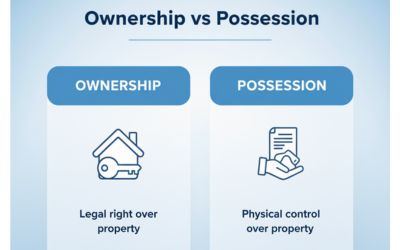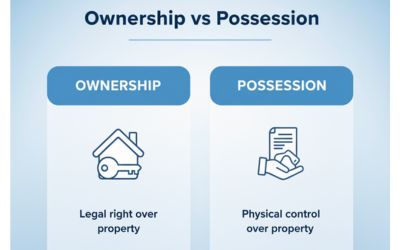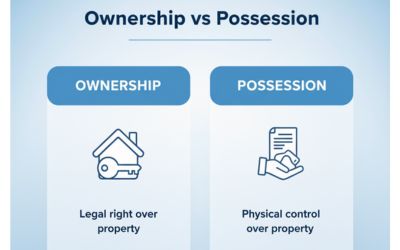Jumma Masjid v. Kodimaniandra Deviah
AIR 1962 SC 847 — Easy English case explainer for students

Quick Summary
In this case, relatives of Basappa sold property in 1920 even though they did not own it then. They had only a hope to inherit in the future (spes successionis), which normally cannot be transferred. In 1933, they actually inherited. The buyer (Ganapathi) said: since you now own it, your earlier sale to me should stand under Section 43 of the Transfer of Property Act (TPA). The Supreme Court agreed. Fairness demands that the later title “feeds” the earlier transfer when the buyer acted in good faith and paid consideration.
Issues
- Does Section 43 TPA apply when the transferor only had a mere expectation to inherit at the time of transfer?
- Does later acquisition of title by the transferor validate the earlier transfer made on misrepresentation?
- Is there any conflict between Section 6(a) (ban on transferring spes successionis) and Section 43 in such situations?
Rules
- Section 6(a) TPA: A chance to inherit (spes successionis) cannot be transferred.
- Section 43 TPA (“feeding the estoppel”): If a person falsely sells property as owner and later becomes owner, the buyer may elect to treat the earlier sale as valid, if the buyer acted in good faith and paid consideration.
- No conflict: Section 6(a) bars the initial transfer; Section 43 later protects the buyer when title actually comes to the seller.
Facts — Timeline

Arguments
Appellant: Jumma Masjid
- Transfer in 1920 was void under Section 6(a); no title passed to Ganapathi.
- Reversioners’ later title should not relate back to validate an earlier void transfer.
- Second transfer (to Appellant) should stand as made by true owners.
Respondent: Under Ganapathi
- Section 43 applies: transferor misrepresented ownership and later acquired title.
- Buyer in good faith paid consideration; fairness protects the earlier sale.
- Appellant’s later purchase cannot defeat the buyer’s election under Section 43.
Judgment

Held: The Supreme Court affirmed that Section 43 applies. When the reversioners inherited in 1933, their new title fed the earlier transfer to Ganapathi. The first buyer could elect to take the property under that sale. The later transfer to Jumma Masjid was invalid as against this election.
Ratio
Section 6(a) and Section 43 serve different purposes. The first prevents transfer of a mere chance. The second cures the earlier defect when the seller later gets title, protecting a bona fide buyer who paid consideration. There is no conflict; Section 43 operates after title arises.
Why It Matters
- Clarifies student confusion between spes successionis and Section 43.
- Shows how fairness protects honest buyers from seller misrepresentation.
- Often tested with problem questions on later-acquired title and buyer’s election.
Key Takeaways
- No present title in 1920 → transfer initially ineffective.
- Title in 1933 → Section 43 lets buyer confirm earlier sale.
- Buyer must act in good faith and for consideration.
- Later purchaser loses against the first buyer’s election.
Mnemonic + 3-Step Hook
Mnemonic: “Sell First, Title Later, Buyer Greater.”
- Sell First: Misrepresentation + consideration.
- Title Later: Transferor later becomes owner.
- Buyer Greater: Buyer may elect to confirm the old sale (Section 43).
IRAC Outline
Issue: Can Section 43 validate an earlier sale made by a non-owner who later acquires title, despite Section 6(a)?
Rule: Section 6(a) bans transfer of a mere chance; Section 43 lets the buyer elect to take under the earlier transfer once the seller gets title, if buyer acted in good faith and for value.
Application: Reversioners sold in 1920 without title; inherited in 1933. Buyer (Ganapathi) acted in good faith and paid. Section 43 allowed him to confirm the 1920 sale.
Conclusion: Earlier sale stands in buyer’s favour; later sale to Jumma Masjid cannot defeat the buyer’s election.
Glossary
- Spes successionis
- A mere hope or chance of inheriting property; not a transferable right (Section 6(a) TPA).
- Feeding the estoppel
- When later ownership “feeds” an earlier defective transfer, validating it for a bona fide buyer (Section 43).
- Reversioner
- A person who will take the property after the life estate ends.
- Election (buyer)
- Buyer’s choice to accept the benefit of Section 43 when the seller later gets title.
FAQs
Related Cases
Example on Section 43 (Feeding the Estoppel)
Student reference for parallel reasoning on later-acquired title validating earlier transfer.
Illustrations on Section 6(a)
Cases clarifying non-transferability of mere chance to inherit.
Share
Related Post
Tags
Archive
Popular & Recent Post





































































































































Comment
Nothing for now